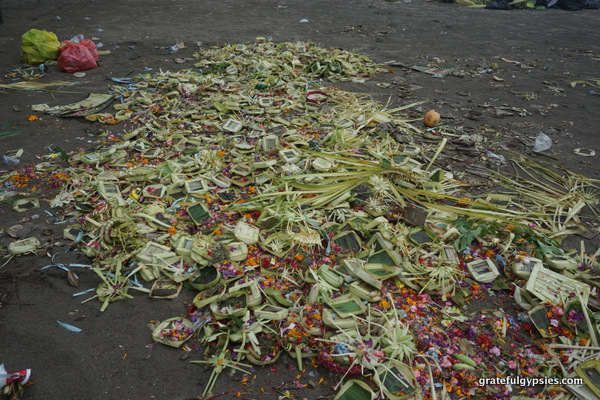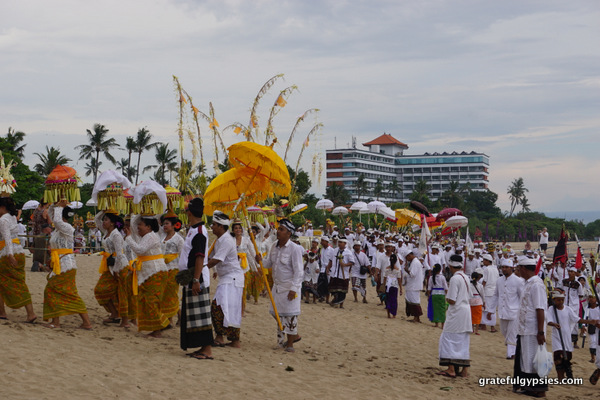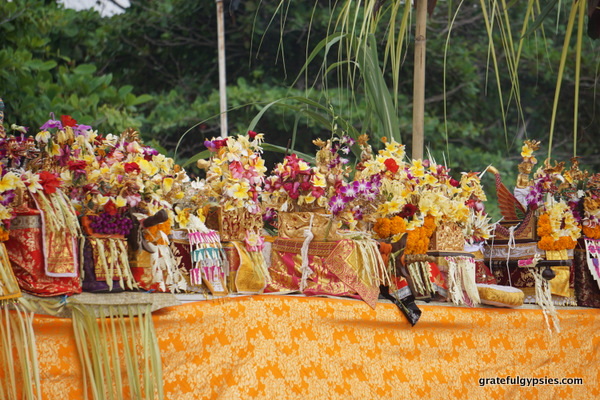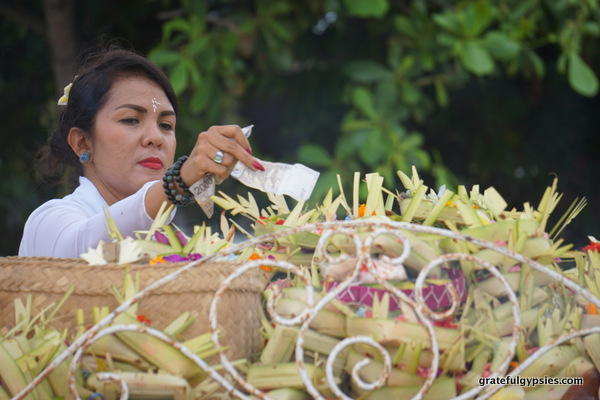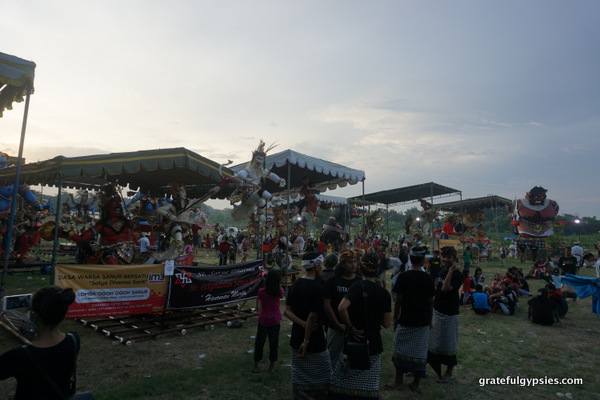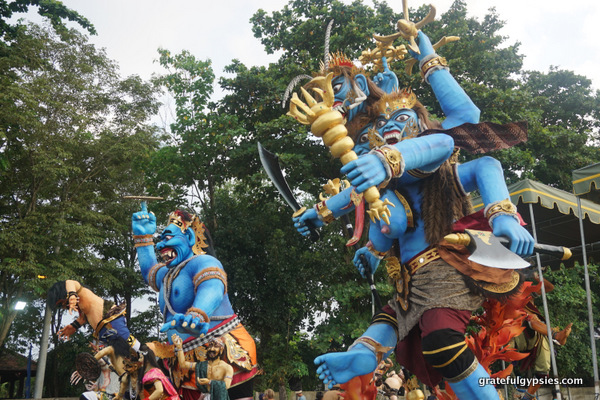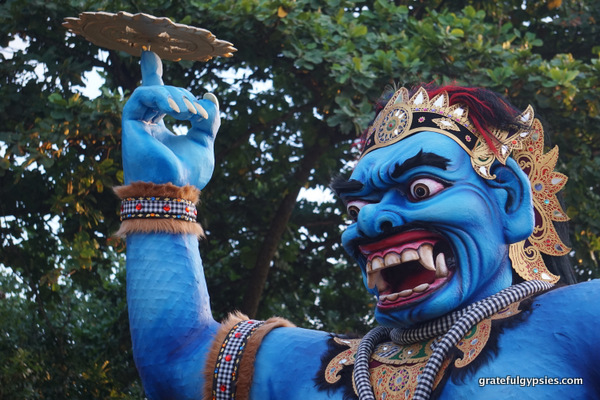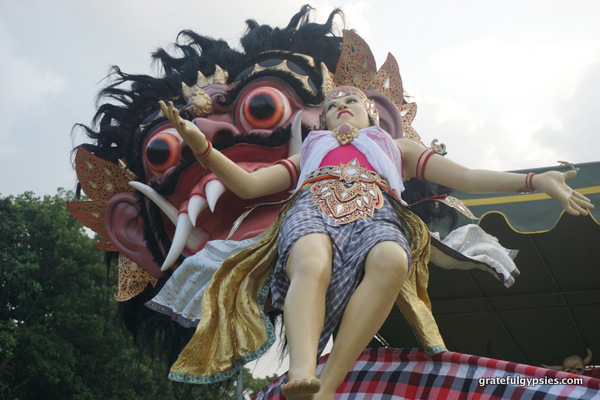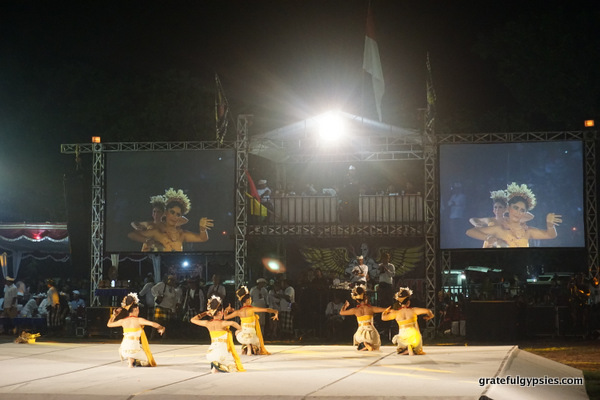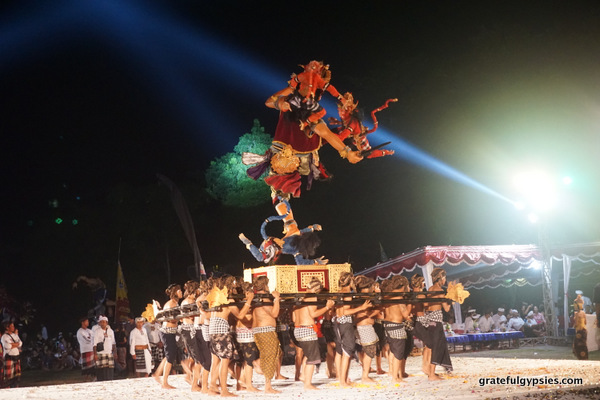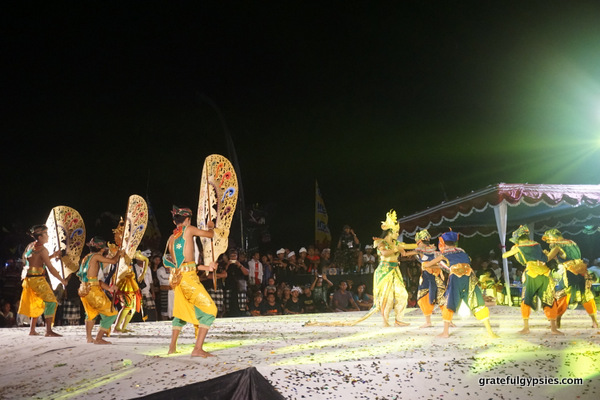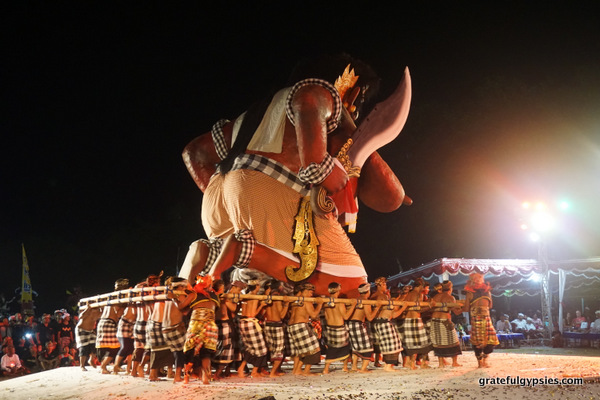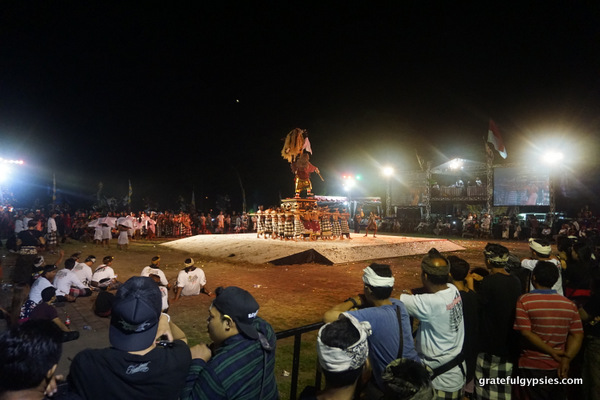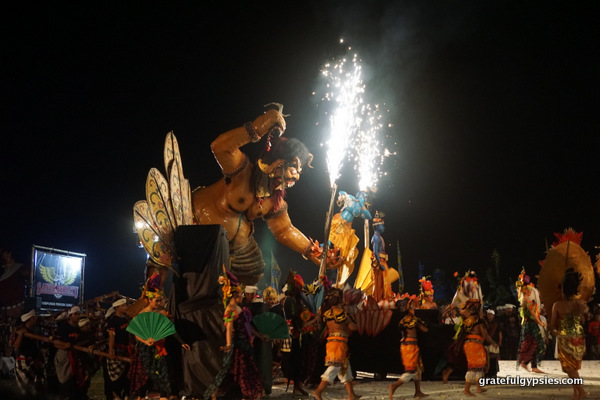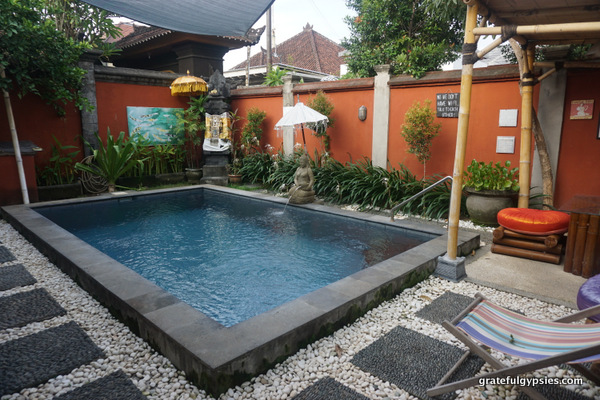Experiencing Nyepi in Bali Posted by sasha on Mar 9, 2016 in Uncategorized
Today is the Balinese New Year, known as Hari Raya Nyepi in Indonesian. On this holiday, the Island of the Gods observes a day of silence – the airport is closed, no cars are allowed on the road aside for emergency vehicles, and local village police known as pecalang patrol the streets to ensure nobody leaves their homes. It is a day meant for self-reflection and meditating, and is the most important holiday in Bali.
On two previous visits to Bali, I had fallen in love with the island and its vibrant, colorful culture. After launching this blog back in 2014, I relished the opportunity to learn more about Balinese culture and share it with our audience. Last year, I wrote a brief guide to Nyepi that will give you all the pertinent information about this special holiday. Researching and writing that article made me want to get back to Bali even more; so much so that I applied for the Darmasiswa program to live there and study the language and culture for an entire school year. With the Nyepi festivities officially behind us, I’d like to share a bit of my experience along with some photos for you to see what it’s like during the most important Balinese holiday.
Melasti Ceremony
Three days before Nyepi, Balinese people perform a purification ceremony known as melasti. During this ceremony, sacred objects are removed from temples to be washed. In Bali, the best place to witness this ritual is at any beach that is nearby a village. Admittedly, I completely forgot about melasti as I was caught up with visiting friends. We went to one of our favorite beaches, only to find that the entire place was shut down due to the ceremony. Unfortunately, the ceremony had already finished and all that remained were the hundreds of offerings scattered across the beach.
Bummed but not defeated, we headed back to our side of the island in hopes that the ceremony may not have finished yet. We were in luck, as it was just getting started. Not wanting to be in the way of such an important event, I snapped a few photos from a distance with my zoom lens and then took it in from afar on my beach towel.
Ogoh-Ogoh Festival
The ogoh-ogoh festival is without a doubt the highlight of Nyepi celebrations, not only for tourists but for the Balinese as well. Villages spend countless hours designing their ogoh-ogoh monsters, and then even more practicing for their local parade or competition. In Sanur, the local banjars (town councils) decided that the traditional ogoh-ogoh parade caused way too much traffic and inconvenience for everyone in the area. As such, they decided to do a big competition in an open field near the beach instead.
Twenty-three banjar were represented, each with their own unique ogoh-ogoh. Everyone got two minutes to perform traditional music and dance that told the story of their ogoh-ogoh, and in the end a winner was decided via a panel of judges and SMS votes from the crowd. The event lasted for well over six hours, wrapping up around 1 AM as the ogoh-ogoh were finally paraded down the main street. Some villages burn them, but many people told us that this practice is no longer followed in Sanur. After six hours of standing, braving the crowds, and snapping photos, I wasn’t about to find out…
Nyepi Day
I’ll be the first to admit that I’ve never been good about following the rules, and that much hasn’t changed. I managed to break three out of four rules for Nyepi:
- Amati Geni: No fire, light, or electricity.
- Amati Karya: No working.
- Amati Lelungan: No movement or travel outside of the home.
- Amati Lelangunan: No entertainment or revelry of any kind.
On this day of silence, you’re not allowed to go out of the house for a full 24 hours. Thankfully, there’s a small swimming pool in our complex that we were still able to use, so not breaking the third rule was easy enough. I definitely cooked, used electricity, did some work, and even had a bit of revelry – if you call drinking a couple of beers at the pool revelry. Maybe next year I’ll try to follow all the rules like a true local.

Build vocabulary, practice pronunciation, and more with Transparent Language Online. Available anytime, anywhere, on any device.
About the Author: sasha
Sasha is an English teacher, writer, photographer, and videographer from the great state of Michigan. Upon graduating from Michigan State University, he moved to China and spent 5+ years living, working, studying, and traveling there. He also studied Indonesian Language & Culture in Bali for a year. He and his wife run the travel blog Grateful Gypsies, and they're currently trying the digital nomad lifestyle across Latin America.



